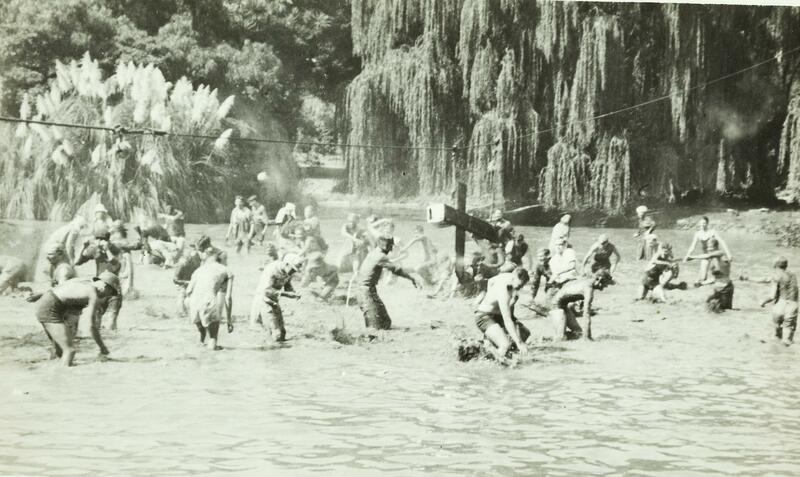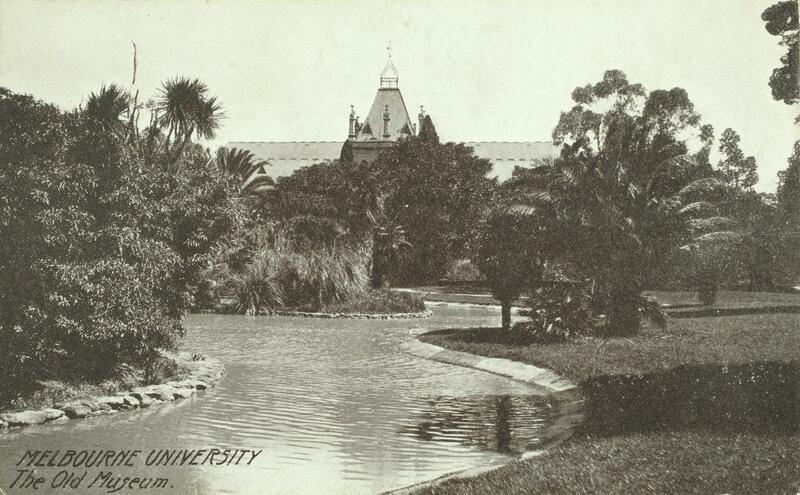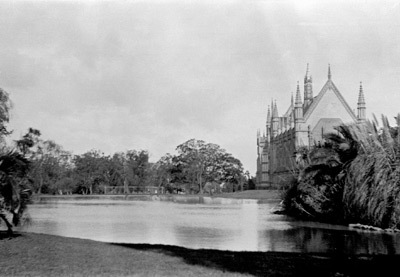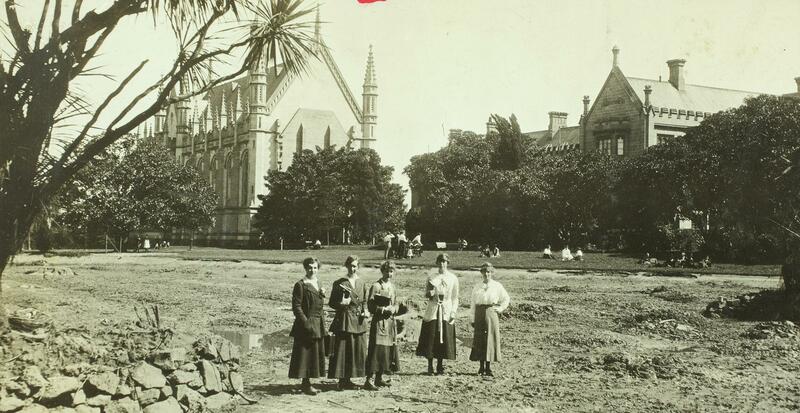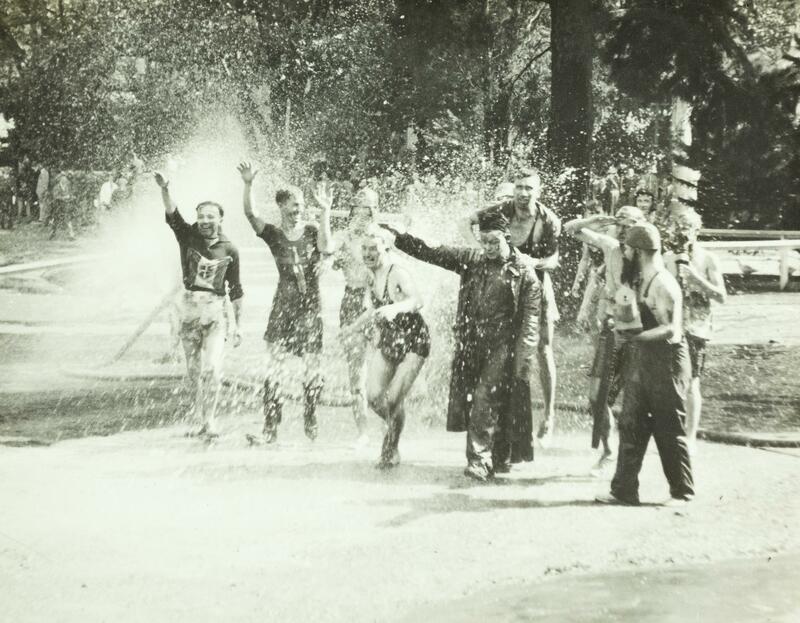The Lake
Title
The Lake
Description
The University of Melbourne was established on swampland, fed by creeks. A creek, known as Townend Creek, flowed along what became Elizabeth Street, out into the Yarra, it was an extension of another stream that began inside the University, and flowed down what is now Bouverie Street. Prior to European settlement, the site of the lake was a swampy area, significant to the Indigenous inhabitants, that linked into the adjacent creek (under what is now the site of the MSD Building).
The creek was dammed in 1861 and the resulting lake became a central and much-loved feature of the campus; used for yabbying, mock battles and boat races, as well as being a site of protest and punishment. The lake was progressively filled in during the 1930s Initially, the areas not occupied by buildings became lawn, and then, in the late 1960s, in the wake of the 1968 revolutions overseas, as part of the “riot-proof campus”, the lawns were dug up and replaced by “a seemingly random asymmetrical selection of tiled and concrete rectangles.” This was variously known as both the Union Lawn and the Concrete Lawn, and still plays an important part in University life as a place where students meet and University events occur.
The creek was dammed in 1861 and the resulting lake became a central and much-loved feature of the campus; used for yabbying, mock battles and boat races, as well as being a site of protest and punishment. The lake was progressively filled in during the 1930s Initially, the areas not occupied by buildings became lawn, and then, in the late 1960s, in the wake of the 1968 revolutions overseas, as part of the “riot-proof campus”, the lawns were dug up and replaced by “a seemingly random asymmetrical selection of tiled and concrete rectangles.” This was variously known as both the Union Lawn and the Concrete Lawn, and still plays an important part in University life as a place where students meet and University events occur.
Creator
Landscape Architect Edward La Trobe Bateman
Source
Architecture on Campus / Philip Goad & George Tibbits
Gary Presland, The Place for a Village: How Nature Has Shaped the City of Melbourne (Melbourne: Museum Victoria Pub., 2008), 71, 87.
Fiona Johnson and Jillian Walliss, “Reconciling History: Inserting an Indigenous Space into the University of Melbourne Campus,” Landscape Review 15, no. 1 (2014).
Thornton McCamish, The University of Melbourne: A Visitor’s Guide (Carlton, Vic: Miegunyah Press, 2008), 89.
Johnson and Walliss, “Reconciling History,” 54. Farrago, Friday 3rd April 1970, 2.
Gary Presland, The Place for a Village: How Nature Has Shaped the City of Melbourne (Melbourne: Museum Victoria Pub., 2008), 71, 87.
Fiona Johnson and Jillian Walliss, “Reconciling History: Inserting an Indigenous Space into the University of Melbourne Campus,” Landscape Review 15, no. 1 (2014).
Thornton McCamish, The University of Melbourne: A Visitor’s Guide (Carlton, Vic: Miegunyah Press, 2008), 89.
Johnson and Walliss, “Reconciling History,” 54. Farrago, Friday 3rd April 1970, 2.
Date
1856
Contributor
| Year | Architect | Work |
| 1856 | Edward La Trobe Bateman |
Relation
Citation
Landscape Architect Edward La Trobe Bateman, “The Lake,” Constructing Change: the evolving Parkville campus , accessed December 19, 2025, https://omeka.cloud.unimelb.edu.au/constructing-change/items/show/18.
